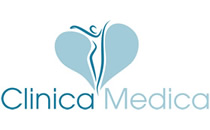
Calcific tendonitis of the shoulder joint can be a painful and limiting condition that occurs when calcium deposits build up in the tendons of the shoulder. While surgical interventions are sometimes necessary, non-surgical treatments are often the first line of defence. In this blog post, we’ll explore various non-surgical treatment options that can help manage and alleviate the symptoms of calcific tendonitis, allowing individuals to regain function and improve their quality of life.
Understanding Calcific Tendonitis:
Calcific tendonitis typically involves the formation of calcium deposits in the tendons of the shoulder, particularly in the rotator cuff. This can lead to inflammation, pain, and reduced range of motion. Non-surgical treatments aim to address these symptoms and promote healing without resorting to surgical intervention.
Non-Surgical Treatment Options:
Physical Therapy: Physical therapy plays a crucial role in the non-surgical management of calcific tendonitis. Therapists design specific exercise programs to strengthen the shoulder muscles, improve flexibility, and enhance overall joint function. Targeted exercises can also help break down calcium deposits and stimulate blood flow to the affected area.
Anti-Inflammatory Medications: Nonsteroidal anti-inflammatory drugs (NSAIDs) can be prescribed to reduce pain and inflammation associated with calcific tendonitis. These medications help manage symptoms and create a more favourable environment for healing. However, it’s essential to use them under the guidance of a healthcare professional.
Ultrasound-Guided Needle Aspiration (Barbotage): Barbotage is a minimally invasive procedure that involves using ultrasound guidance to locate calcium deposits in the shoulder and then aspirating or breaking them up with a needle. This can help alleviate pain and improve function without the need for surgery. Multiple sessions may be required for optimal results.
Extracorporeal Shock Wave Therapy (ESWT): ESWT is a non-invasive treatment option that uses shock waves to break down calcifications in the shoulder tendons. This therapy promotes healing and can improve pain and function over time. It is typically considered for individuals who have not responded well to other conservative treatments.
Corticosteroid Injections: Corticosteroid injections directly into the affected area can provide temporary relief by reducing inflammation. While they do not address the underlying cause of calcific tendonitis, they can be beneficial in managing symptoms, especially when combined with other non-surgical interventions.
Lifestyle Modifications: Making lifestyle changes can contribute to the success of non-surgical treatment. This may include modifying activities that exacerbate symptoms, maintaining a healthy weight, and incorporating shoulder-friendly exercises into daily routines.
Conclusion:
Non-surgical treatment options for calcific tendonitis of the shoulder joint offer a holistic approach to managing symptoms and promoting healing. By combining physical therapy, medications, minimally invasive procedures, and lifestyle modifications, individuals can often achieve significant improvements in pain, range of motion, and overall shoulder function. It’s crucial to consult with a healthcare professional to determine the most appropriate non-surgical treatment plan based on the severity of the condition and individual factors.
Book your treatment today:
Consultation + Ultrasound-guided Barbotage and Steroid injection for £300.
** Prior diagnosis of calcific tendonitis (typically confirmed by a GP or specialist through a shoulder x-ray to verify calcium deposit) is required before booking.
